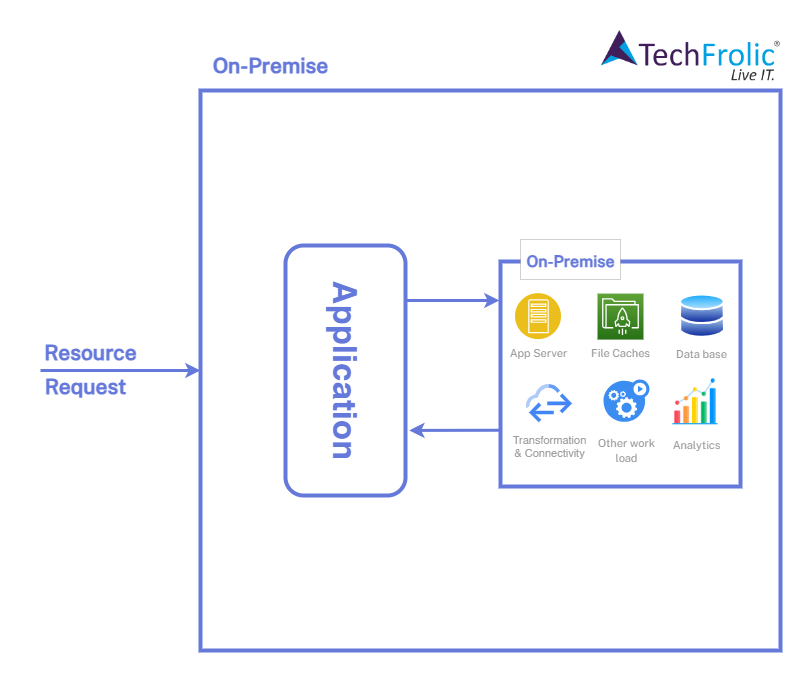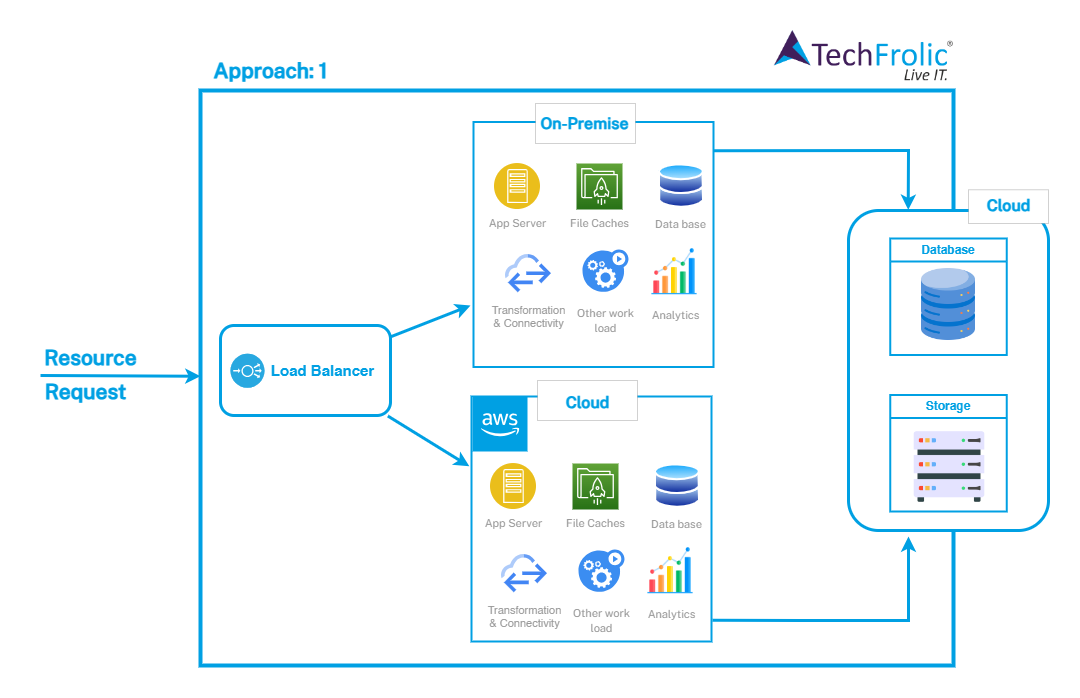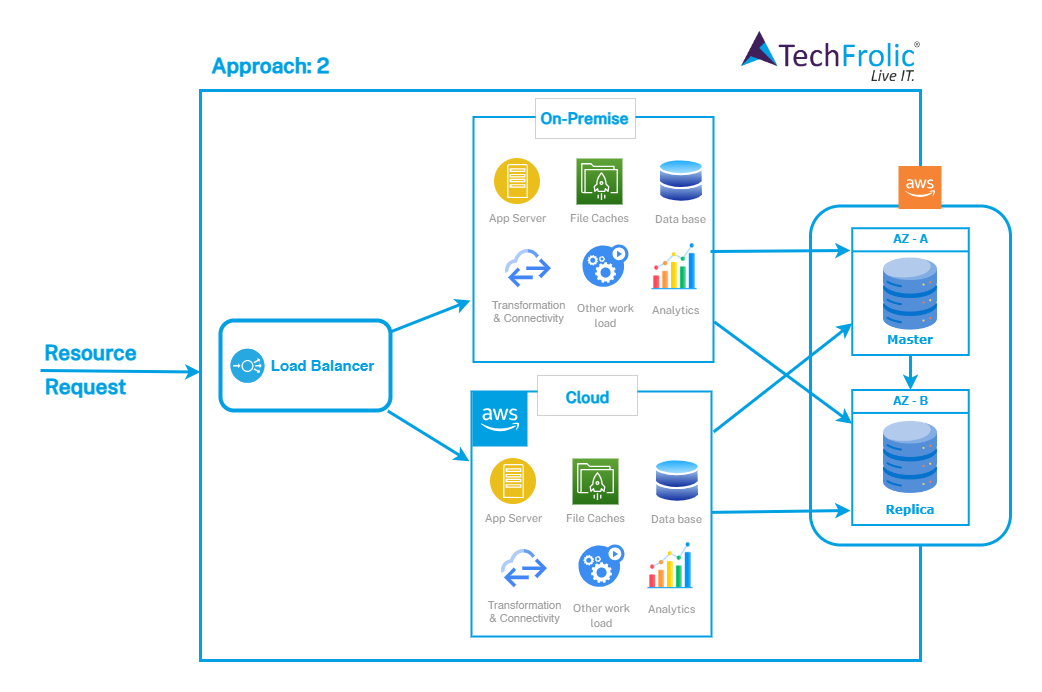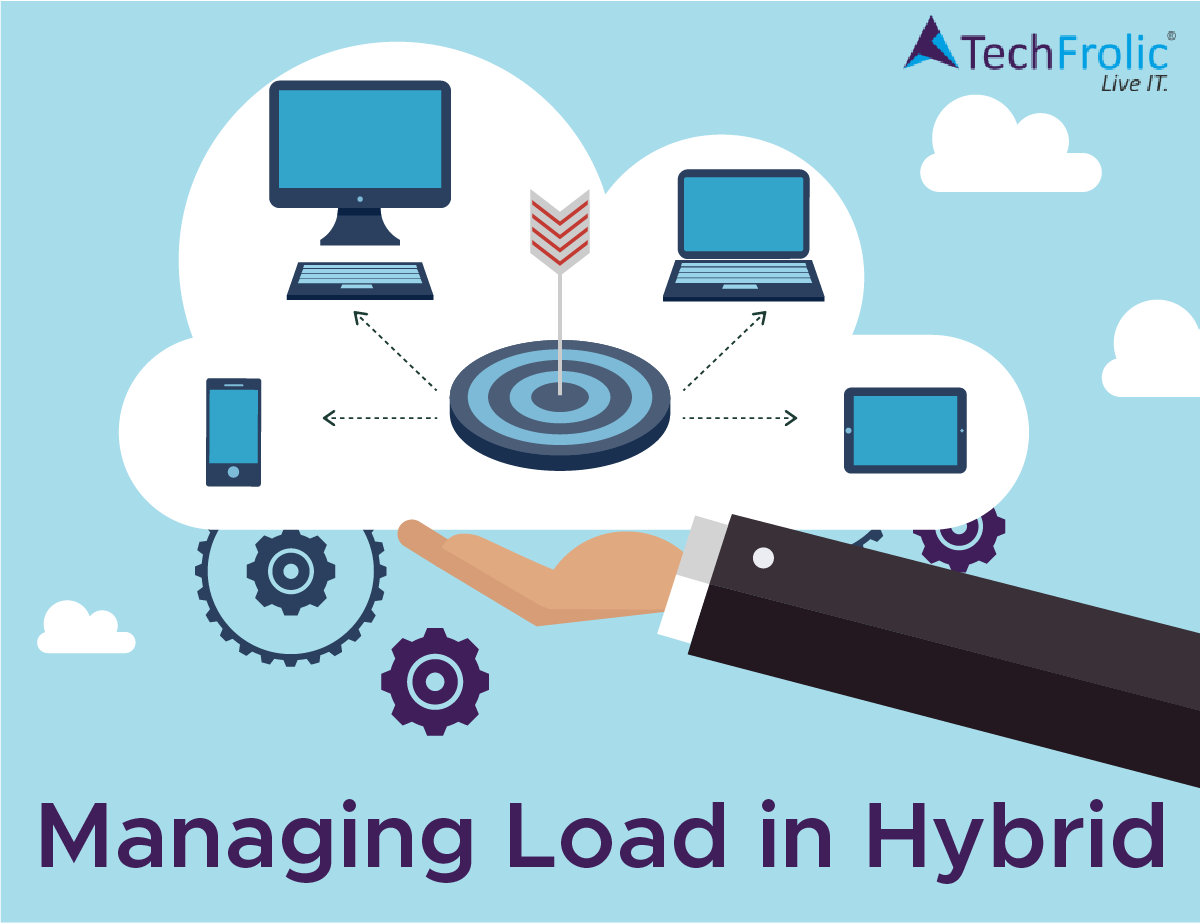Evolving Hybrid Cloud Architectures – Failover and Load Balancing
In our previous article, “How hybrid mode in Cloud strategy can be life saver“, we shed light on how the hybrid model can transform operations in specific scenarios. Today, our focus shifts to exploring the diverse architectures within hybrid systems.
The conventional on-premises approach, while familiar, presents certain limitations:
Failover setup: More than 90% of on-prem infra does not have failover setup, and architecting a failover in on-prem is not cost friendly and requires deep tech skills.
Load balancing: If you achieve load balancing in on-prem infra, the additional resources will remain un-utilized for most of the time while if you don’t provision this, If the system experiences a surge in traffic, such as during peak shopping seasons, it may struggle to handle the increased load due to a lack of load balancing.

To address these challenges, several hybrid approaches can be embraced:
Hybrid approach#1: Replicate the web application architecture in cloud (parallel to on-prem) with a load balancer at forefront.

Pros:
- AWS System Pauses, DB/Storage Remains Active: During occasional downtimes on AWS or low usage, the cloud based app might halt while the database and storage components continue operating in the cloud.
- On-Premise Failure Redirects Traffic to Cloud: Should the on-premises system encounter an outage, traffic will seamlessly reroute to the cloud-based setup, ensuring uninterrupted service delivery.
- Dynamic Load Distribution Amidst Traffic Surges: In scenarios of high traffic loads, the system intelligently balances the workload between on-premises and cloud setups, optimizing performance and preventing overwhelming traffic spikes.
Cons:
This approach lacks a mechanism for handling database failover.
Hybrid approach#2:
What if the database fails ? The answer to this is approach no. 2 as depicted in the figure below:

Along with the advantages for approach#1, having database in Multi A-Z way prevents us from database failover.
If hybrid is your way to go, above approaches should help you make the platform resilient. Whether it’s optimizing resource utilization, fortifying against downtime, or staying agile in the face of unpredictable surges, the hybrid approach stands as a testament to innovation.
We value your feedback and insights. Until we meet again, thank you and goodbye for now.





